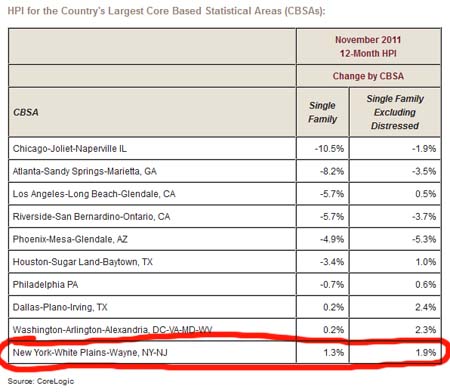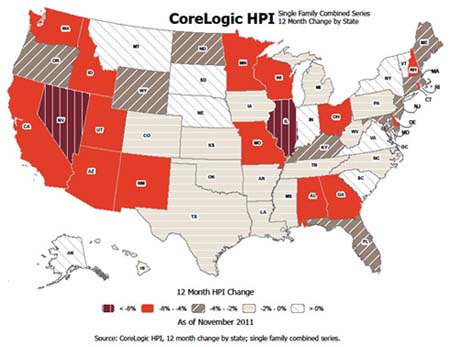From the NY Times:
FOR whatever reason, homes sales picked up in New Jersey in the latter part of 2011. A new statewide market report shows contract signings increased in six of the seven months from May through November, compared with 2010.
Also, the inventory of homes for sale shrank every month since May, according to Jeffrey G. Otteau, an analyst, whose Otteau Valuation Group in East Brunswick does monthly reports for the real estate industry; he called the latest news a concrete sign that the market was “stabilizing.”
His December report was the first one in several years to sound a hopeful note. Until the state’s huge foreclosure backlog comes back on the market — and how fast that happens is important — the market may improve sometime this year to the point that prices stop declining and perhaps even modestly start to rise.
But that is the statewide picture. A great division in market fortunes between northern and southern Jersey — and urbanized areas close to Manhattan and more rural regions — became clear during the recent recession and remains stark in the fresh statistics. Mr. Otteau predicted that the gap would shape the timing and pattern of potential recovery, and several agents in the field agreed with him.
“Simply put,” said Dawn Rapa, a Coldwell Banker Elite agent working in rural Salem County, “the only people I’ve seen selling their houses recently are those who absolutely had to — because they were in financial disarray, a job change, divorce or death.”
Salem County, rich in historic houses and farmland but short on well-paying jobs or a quick commute to an urban center, has the largest inventory of all 21 counties surveyed: 44.5 months’ worth of houses, the preponderance of them priced under $400,000.
…
Several other counties in southern New Jersey have inventories about twice the size of the state average — 29 months’ worth in Cumberland County, 26 in Cape May County, and 24 in Atlantic County.In Cape May and Atlantic, the primary backlog is for more expensive homes, many of them built in the boom years to appeal to shoreline vacationers. Atlantic has just shy of six years’ worth of inventory in the $600,000-to-$1 million range.
For homes priced from $1 million to $2.5 million, the Otteau report predicted, it will take more than four years to sell the inventory in Atlantic County and close to seven years in Ocean County.
…
The market misery is not all concentrated in the south, however. In the northernmost county, Sussex, the inventory is 20 months. In the $400,000-to-$599,999 bracket, five and a half years’ supply is already on the market.In the town of Vernon, which is home to several popular ski areas, and where construction was booming in the mid-2000s, the average sale price of a home was $250,000 in 2007, according to the real estate Web site Trulia. Now the site has it at $100,000.
…
Nearby in the somewhat more affluent town of Sparta, a number of large houses built about a decade ago on one-acre or larger lots are now being offered at reduced prices or as short sales.“Houses are selling,” said Catherine Kut, an agent at Weichert Realtors in Sparta, “but they have to be in fabulous condition and still occupied, as a rule.


